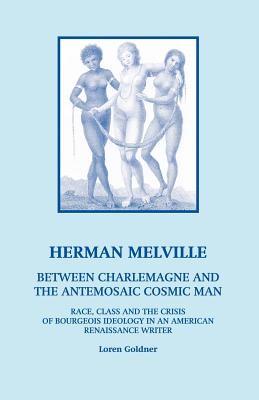
- We will send in 10–14 business days.
- Author: Loren Goldner
- Publisher: Queequeg Publications
- ISBN-10: 0970030827
- ISBN-13: 9780970030825
- Format: 14 x 21.6 x 1.7 cm, softcover
- Language: English
- SAVE -10% with code: EXTRA
Reviews
Description
Class Struggle and the Adamic Imagination in Herman Melville: In Europe, after 1848, bourgeois consciousness in revolt sought a new universal in the working class but soon found itself in the orbit of the state civil service; in America, bourgeois consciousness in revolt found a new universal in what Melville called "antemosaic" reality, Queequeg, embodied in the multiracial working class, the "Anacharsis Cloots deputation," in radical antithesis to the state. Herman Melville (1818-1891) came to this perspective in the feverish production of six novels of the sea, culminating in Moby Dick, in the 1846-1851 period. As the whaling ship Pequod was destroyed by Moby Dick, the Indian harpooner Tashtego nailed a red flag to the mast, also catching the wing of a sky-hawk, with its "imperial beak." The 1848-1850 conjuncture in the Atlantic world witnessed the birth of communism (Marx), modern art (Courbet, Flaubert), the end of classical political economy, and the formulation of the entropy law, or Second Law of Thermodynamics. Their simultaneity was not accidental, and Melville's work echoes each of them. 1848, in Europe, had been the year of the eruption of "the dangerous classes"; in America, it marked the end of interclassist Jeffersonian-Jacksonian populism, over the slavery issue. The link between communism, modernism, neoclassical economics and the Second Law of Thermodynamics is the beginning of the "dissolution of the object" in the "dream worlds" of a new mass consumption. This study attempts to situate Melville's works in this convergence.
- Author: Loren Goldner
- Publisher: Queequeg Publications
- ISBN-10: 0970030827
- ISBN-13: 9780970030825
- Format: 14 x 21.6 x 1.7 cm, softcover
- Language: English English
Class Struggle and the Adamic Imagination in Herman Melville: In Europe, after 1848, bourgeois consciousness in revolt sought a new universal in the working class but soon found itself in the orbit of the state civil service; in America, bourgeois consciousness in revolt found a new universal in what Melville called "antemosaic" reality, Queequeg, embodied in the multiracial working class, the "Anacharsis Cloots deputation," in radical antithesis to the state. Herman Melville (1818-1891) came to this perspective in the feverish production of six novels of the sea, culminating in Moby Dick, in the 1846-1851 period. As the whaling ship Pequod was destroyed by Moby Dick, the Indian harpooner Tashtego nailed a red flag to the mast, also catching the wing of a sky-hawk, with its "imperial beak." The 1848-1850 conjuncture in the Atlantic world witnessed the birth of communism (Marx), modern art (Courbet, Flaubert), the end of classical political economy, and the formulation of the entropy law, or Second Law of Thermodynamics. Their simultaneity was not accidental, and Melville's work echoes each of them. 1848, in Europe, had been the year of the eruption of "the dangerous classes"; in America, it marked the end of interclassist Jeffersonian-Jacksonian populism, over the slavery issue. The link between communism, modernism, neoclassical economics and the Second Law of Thermodynamics is the beginning of the "dissolution of the object" in the "dream worlds" of a new mass consumption. This study attempts to situate Melville's works in this convergence.


Reviews